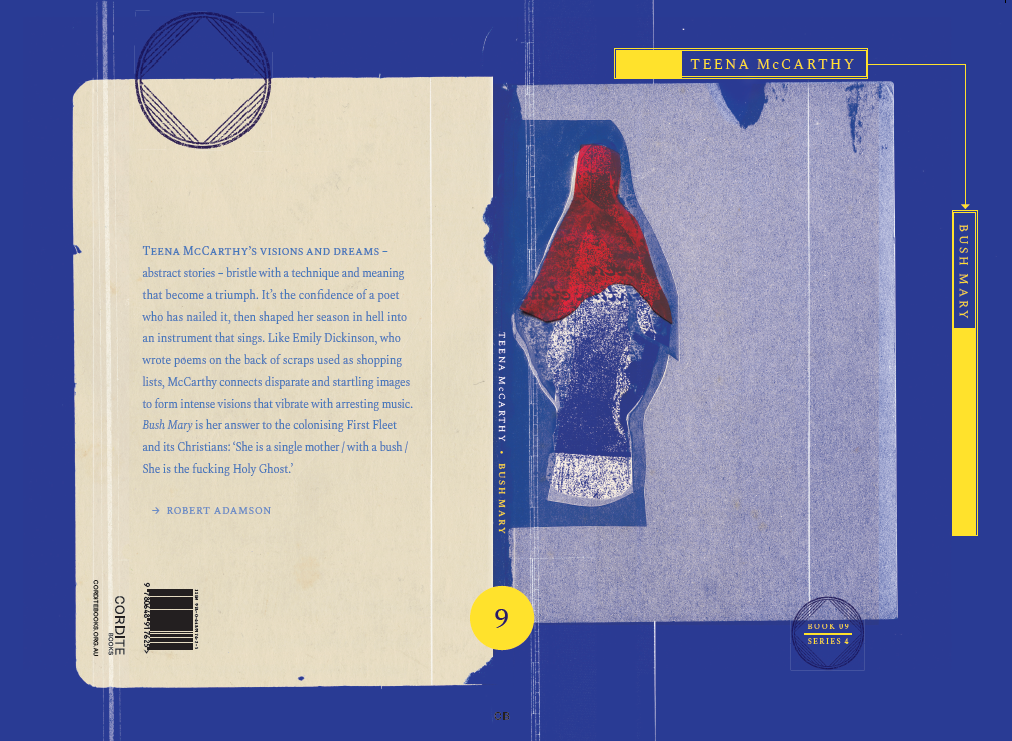
When Teena McCarthy told me she had constructed this book from poems, lines, phrases and images that she had written on odd-sized pieces of paper and had gathered them until they formed a manuscript, I immediately thought of Emily Dickinson, who also wrote many of her poems on the backs of envelopes and scraps that had been used as shopping lists. The connection is not far-fetched: McCarthy connects startling images to form intense visions that vibrate with arresting music.
The poems in Bush Mary work on multiple levels – woven from history, life experience and metaphor are visionary chords made of words. Images appear gradually, sometimes over several pages, like photographic prints forming in developing chemicals. I want to use the word ‘mystical’ here – harsh and beautiful, these poems ache with reality and seem to bring poetry back to life again. This book reads as if written by a poet working before the last century of modernism; albeit aware of that era, it comes from the pre-dawn of poetry before it became clogged with the ‘anxiety of influence’ and experimental verse. Maybe the poems trace mystic notes.
McCarthy’s visions and dreams – abstract stories – bristle with a technique and meaning that became a triumph. It’s the confidence of a poet who has nailed it, then shaped her season in hell into an instrument that sings. It is poetry created from transformed traumas, and importantly, effortless praise, for both survivors and old ghosts that flash behind the present moment or line from the past. As we read, yesterday, today and tomorrow mix, and a generous spirit is revealed that doesn’t grow bitter even after every rotten deal has been broken and served up to the poet and her people. There’s only the poem, only the new life to be written and lived out, only the song that strikes into your soul, reinventing love and compassion by its flashing words and naked statements.
The brilliant metaphor and terrible fact of the stolen Indigenous children, later as young women, encapsulates the Church sending Bush Marys to the outback stations as slaves or worse. Here is the attitude of the white men:
When are they coming? Dunno, best be soon. Feed this Nothing like them Bush Marys, long as they don’t bring the son. 3 shillings is a lot for us. They’re lucky to get 1, mate! Better do their duty … cook a stew and bend over, give me job. Done. Let’s face it mate, we doing them a favour!
In the fifth century, Saint Augustine said, ‘A virgin conceives, yet remains a virgin: a virgin is heavy with child; a virgin brings forth her child, yet she is always a virgin.’ McCarthy, almost 2000 years later, replies, ‘We can no longer escape / into the truth of Bush Mary, / we’re non-virgin, / used by carnal. / She is every body. / Bush Mary blood’. Then, like Eurydice, ‘She has no voice.’ McCarthy creates that voice in profoundly visual poems, and answers the colonising First Fleet and its following Christians: ‘She is a single mother / with a bush / She is the fucking Holy Ghost.’













